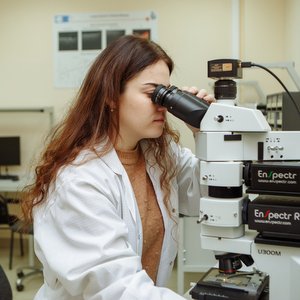
The technology will be based on Raman spectroscopy, which has proven high accuracy in the study of epidermis and upper layers of the dermis. The laser beam is directed at the patient’s skin; changes in the scattered emission spectrum correspond to the presence of certain substances in the skin.
Previously this method was used by scientists to diagnose skin neoplasms and kidney diseases. Samara scientists want to expand the field of application of Raman spectroscopy and introduce this method into therapeutic practice. Processing of the results of spectroscopy and diagnosis can be made with the help of convolutional neural networks and appropriate software.
The project’s author also says that skin is the largest human organ by area prone to many different diseases and pathologies. According to the World Health Organization, residents of developed countries now visit a dermatologist 40 % more often than a decade ago. However, despite the increased demand, the existing methods in dermatology and cosmetology still do not allow for a quick and high-quality diagnosis.
Most often the skin condition is diagnosed through visual examination by a dermatologist. The accuracy of this method is not high — only 60 to 75 %, depending on the qualifications and experience of the doctor. In addition, visual inspection does not allow to assess the skin biochemistry. With a dermatoscope, one can examine the structure of the skin more closely, almost like under a microscope, but unfortunately only the outside, not the inside. In addition, many pathological conditions have a visually very similar clinical picture, or even go unnoticed.
The gold standard of diagnosis is histopathological examination. However, high accuracy comes at a high price: the price of a complete set of histological equipment starts at several million rubles, and the cost of analysis is also high, since consumables are required. A histological examination takes several hours or even days. Another important aspect of the procedure for the patient is its invasiveness, that is, a piece of tissue is excised and taken. Therefore, the development of a new technology which will allow to analyze the biochemical composition of the patient’s skin quickly, accurately, painlessly and inexpensively, remains relevant.
The unit size allows to easily place it on the table in the dermatologist’s office. For biochemical skin analysis, the unit has to be connected to a computer or laptop with the appropriate software developed by the project team. In the future, this skin composition biochemical analysis technology will be patented.
For reference
* Irina Matveeva is the author and co-author of more than 20 publications in leading Russian and international journals. In 2020, she became a finalist of the VII season of INRADEL international competition of innovative projects within the framework of the Microelectronics forum, and also took 3rd place in the III Sino-Russian competition of industrial innovations. In spring 2022, she won the competition for the assignment of monetary payments to young scientists and engineers working in the Samara region. In autumn 2022, she won a grant competition of Samara University for the development of startup projects and the regional Young Scientist competition.
** All-Russian UMNIK-Photonics competition is organized to support projects of young scientists in the field of photonics, radiophotonics, optoelectronics and related fields in the interests of organizations of the Consortium of the Competence Center of the Photonics National Technological Initiative, as well as to encourage young scientists and specialists to create small innovative enterprises, necessary for commercialization of scientific development results.
*** Raman spectroscopy is a type of spectroscopy that uses inelastic scattering of monochromatic light (laser radiation) in the molecules under study. The spectrum of scattered radiation reveals spectral lines that are absent in the spectrum of primary (excitation) light. The number and location of the new spectral lines depend on the molecular structure of the substance under research, which enables detecting certain changes in the biological tissues.
